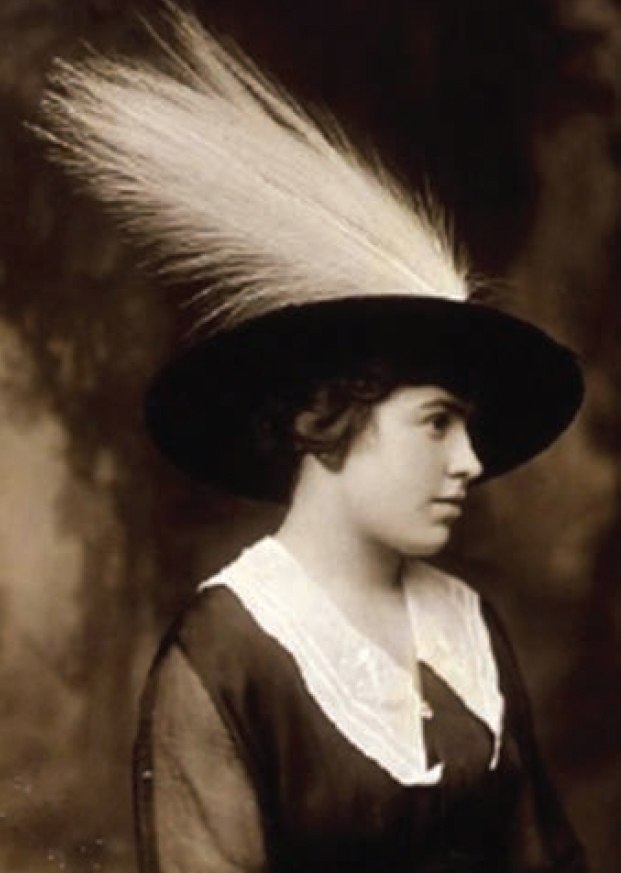31 : Egret plume hat
1886
There is little doubt that egret plumes look striking on both birds and hats, but the demand from fashionable women and milliners in the late 19th century caused a dangerous plummet in the numbers of white heron species across North America and Europe.
The beauty of birds’ plumage has always been obvious, but rapid human population growth after the Industrial Revolution, along with the attendant increase in disposable income, resulted in the expanding ranks of the well-off beginning to demand the plumes of exotic birds as adornments for fashionable hats.
In parallel with this, the world’s armed forces had long been using Ostrich and egret feathers for ceremonial hats. As the demand for both fashionable and military millinery increased, many species of wild bird were exploited on an industrial scale, and the populations of several egret and bird-of-paradise species were seriously depleted for their ostentatious plumes.
In 1886, Frank Chapman, an ornithologist at the American Museum of Natural History, performed a ‘Feathered Hat Census’ on 700 women’s hats that he saw on the streets of Manhattan, New York. He was able to identify 40 species of American wild bird – sometimes with their entire skins stuffed and pinned in place – the most numerous of which were Common Tern, Northern Bobwhite, Northern Flicker, Cedar Waxwing and Snow Bunting. Egrets were already too scarce and expensive to feature on street wear, but feather trim also featured on the classic fedora hat, worn by the century’s more sharply dressed men.
By the early 20th century, one in every thousand Americans was employed in the trade and egret feathers were worth $80 per ounce wholesale – more than four times as much as the contemporary gold price – and many populations of Snowy Egret in particular were approaching wipe-out. So closely were these birds associated with the plume trade that the French term for egret, l’aigrette, remains the fashion industry’s term for decorative feathers – or jewellery – placed prominently on headwear. The showy plumes, so effective at attracting avian mates, had perhaps achieved a similar purpose in higher society, too.
At the London Commercial Sales Rooms in 1902, the feathers of some 192,960 herons and egrets were auctioned, their plucked bodies left to rot and, as the plumes were usually collected at their breeding colonies, their chicks – numbering at least 400,000 – left to starve.
Such plunder of a finite and visible natural resource was quickly noticed, and protests about the decline of Great Crested Grebe – its downy feathers used as a fur substitute in ladies’ fashion – and Kittiwake in Britain led to protective legislation in 1880. New Zealand’s endemic Huia was declared extinct in 1907, and it is also believed that Great Auk was partly wiped out due to the use of its feathers as a substitute for Eider down, when that species in turn was over-exploited in North America.
In the United States, Snowy Egret was adopted as the symbol of the bird preservation movement, and the American Ornithologists’ Union, formed in 1883, had its first campaign, along with the Audubon Society. Volunteers and seasonal wardens guarded large wading bird colonies in areas like Corkscrew Swamp, Florida, as early as 1912. The law was on their side – 1900 saw the passing of the Lacey Act, the first national conservation legislation in the USA, later expanded to prevent imports of foreign wildlife and specimens, speeding up the ending of the illegal plume trade in North America.
Almost in parallel, the Society for the Protection of Birds (see pages 80–81) was formed in Britain in 1889 to counter the increasing international trade in exotic plumage. Among its professed rules was “that Lady-Members shall refrain from wearing the feathers of any bird not killed for purposes of food, the Ostrich only excepted”.
In fact the exploitation of seabirds for their feathers continued into the 20th century, but due to the lobbying of the early conservationists, the wearing of wild bird plumes became unfashionable by the beginning of the First World War, possibly due to a collapse in prices as the world’s markets and tastes became more austere, as well as mounting public disapproval.
After several aristocrats began to support the society, it was given a Royal Charter in 1904, allowing it to use the prefix ‘Royal’. Eventually, ethically farmed Ostrich plumes became the decoration of choice for ceremonial hats, sparing the lives of many real ‘fashion victims’.
